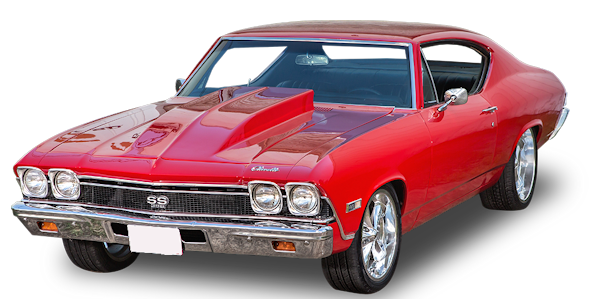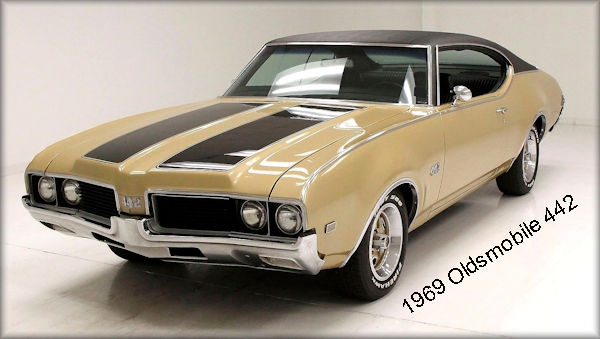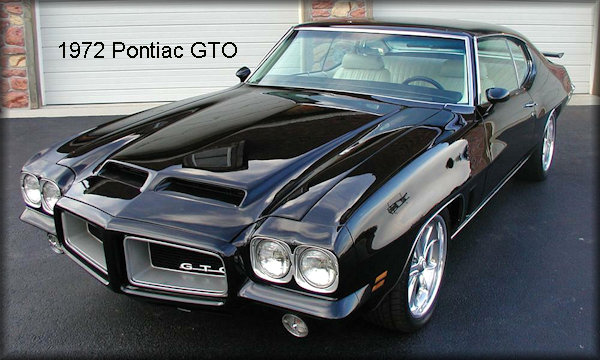



Mobile users:
For best results, view in Landscape mode.
The Oldsmobile 4-4-2 (aka the 442) is a
muscle car produced by Oldsmobile
between the 1964 - 1987 model years.

Introduced as an option package for the
F-85 and Cutlass models, it became a
model in its own right from 1968 to 1971,
spawned the Hurst/Olds in 1968, then
reverted to an option through the mid-1970's.
The name was revived in the 1980's on
the rear-wheel drive Cutlass Supreme.
The "4-4-2" name (pronounced "Four-four-two")
derives from the original car's 4-barrel
carburetor, 4-speed manual transmission,
and dual exhausts.
In 1970, Oldsmobile made their 455ci V8
the standard 4-4-2 plant.
When equipped with the potent W-30
package, the engine produced 360HP.
With a 4-speed manual transmission,
the 442 ran the quarter mile in 13.7 seconds.
Also in 1970, the Buick GSX was introduced.
Based on the Buick Skylark, the 455ci
engine was fitted with improved heads,
larger valves and a hotter camshaft.
The motor was rated as high as 360HP.
In 1969, the Dodge Charger Daytona
was introduced.
From the 23-inch rear wing to the
wedge shaped nose, the Charger Daytona
measured 18-feet long.
Standard equipment included heavy-duty
suspension and brakes and a 3-speed
automatic transmission.
A four-speed manual was optional.
The Charger Daytona had a 440 cubic-inch
Magnum V8, producing 375HP.
The optional 426 Hemi motor was rated
at 425HP.
In 1970, Plymouth applied the Daytona
formula to their Road Runner creating the
Superbird.
The Chevrolet Chevelle is a mid-sized car
which was produced by Chevrolet in 3
generations for the 1964 - 1978 model years.
Part of the General Motors (GM) A-body platform,
the Chevelle was one of Chevrolet's most
successful nameplates.
In 1964, Chevrolet introduced the Chevelle
with either a 283ci or 327ci small-block
engine.
After Oldsmobile offered a 400-cid 442 and
Buick a 401ci Gran Sport in early 1965,
that was all it took for Chevy to break GM's
policy for A-body series engines.
A big-block V8, at 396 cubic-inches, was
scheduled for release in full-size Chevys
and Corvettes.
It would also be the standard engine
in the Chevelle SS package.
The Pontiac GTO was manufactured from
the 1964 - 1974 model years.

The GTO was developed by Pontiac division
president John DeLorean (Back to the Future car
is a DeLorean) and was initially powered
by a 389 cu in (6.4 L) V8 engine producing
325 hp.
The name, which was DeLorean's idea,
was inspired by the Ferrari 250 GTO, the
successful race car.
It is an Italian abbreviation for Gran Turismo
Omologato ("grand tourer homologated"),
which means officially certified for racing
in the grand tourer class.
The Pontiac GTO was never certified as a
Grand Tourer race car. Internally, it was
initially called the "Grand Tempest Option",
one of many automobiles in the Pontiac
line up with a 'Grand' in it.
It deceptively looked like a simple Tempest
and offered an option that bypassed a GM
rule of producing midsize cars with engines
greater than 330 CID.
CID stands for cubic inch displacement
and is used to measure the volume of an
engine’s cylinders and combustion chamber.
This unit of measurement is no longer
used today, 330 CID engine equals 5.4 liters.
In 1964, the Pontiac GTO, a car often
considered to have strongly influenced
the muscle car era, was introduced.
The success of the GTO led other GM divisions
to develop muscle cars such as the 1964
Oldsmobile 442, 1964 Chevrolet Chevelle SS
and 1965 Buick Gran Sport.